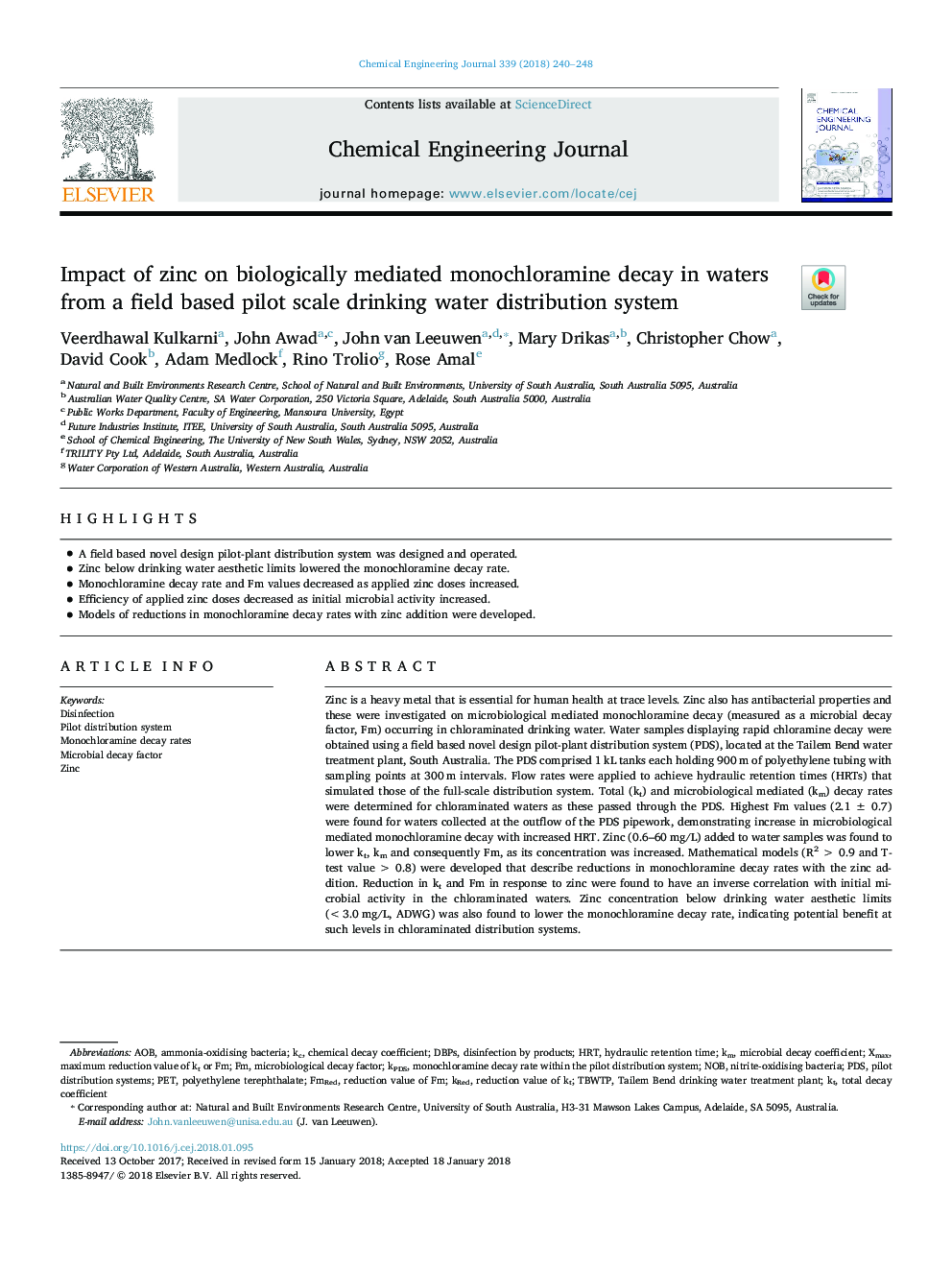| Article ID | Journal | Published Year | Pages | File Type |
|---|---|---|---|---|
| 6580031 | Chemical Engineering Journal | 2018 | 9 Pages |
Abstract
Zinc is a heavy metal that is essential for human health at trace levels. Zinc also has antibacterial properties and these were investigated on microbiological mediated monochloramine decay (measured as a microbial decay factor, Fm) occurring in chloraminated drinking water. Water samples displaying rapid chloramine decay were obtained using a field based novel design pilot-plant distribution system (PDS), located at the Tailem Bend water treatment plant, South Australia. The PDS comprised 1â¯kL tanks each holding 900â¯m of polyethylene tubing with sampling points at 300â¯m intervals. Flow rates were applied to achieve hydraulic retention times (HRTs) that simulated those of the full-scale distribution system. Total (kt) and microbiological mediated (km) decay rates were determined for chloraminated waters as these passed through the PDS. Highest Fm values (2.1â¯Â±â¯0.7) were found for waters collected at the outflow of the PDS pipework, demonstrating increase in microbiological mediated monochloramine decay with increased HRT. Zinc (0.6-60â¯mg/L) added to water samples was found to lower kt, km and consequently Fm, as its concentration was increased. Mathematical models (R2â¯>â¯0.9 and T-test valueâ¯>â¯0.8) were developed that describe reductions in monochloramine decay rates with the zinc addition. Reduction in kt and Fm in response to zinc were found to have an inverse correlation with initial microbial activity in the chloraminated waters. Zinc concentration below drinking water aesthetic limits (<3.0â¯mg/L, ADWG) was also found to lower the monochloramine decay rate, indicating potential benefit at such levels in chloraminated distribution systems.
Keywords
Related Topics
Physical Sciences and Engineering
Chemical Engineering
Chemical Engineering (General)
Authors
Veerdhawal Kulkarni, John Awad, John van Leeuwen, Mary Drikas, Christopher Chow, David Cook, Adam Medlock, Rino Trolio, Rose Amal,
